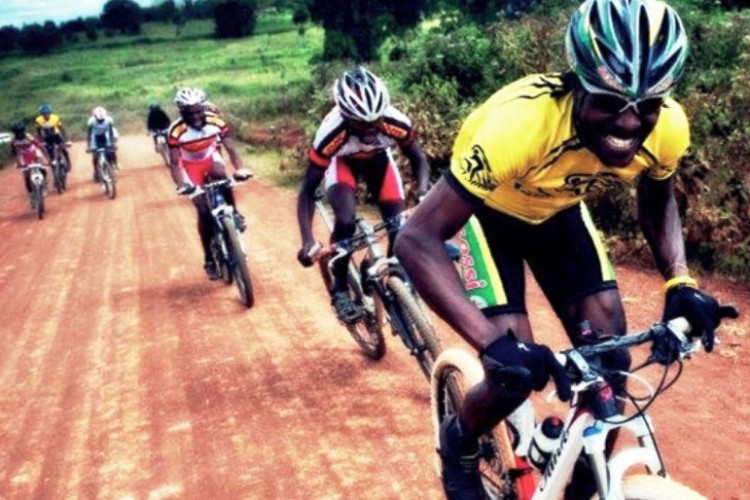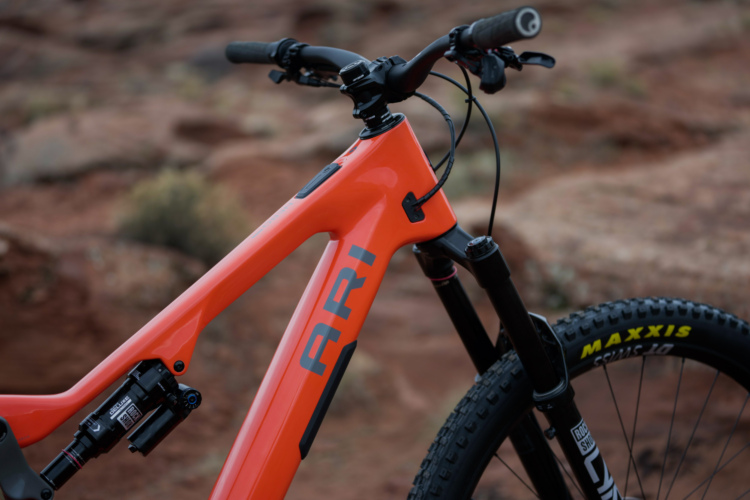
Mountain biking has spread its roots across the earth like the best kind of invasive species. It’s the rare kind that inadvertently benefits most endemic species while providing mental and physical-health sustenance for the human animals. People on every thawed continent are hoot ‘n’ hollering their way down singletracks, and the number of riders is growing daily.
We recently chatted with some folks who are feeding the growth of mountain biking and gravel racing in the East African nations of Kenya, Rwanda, Tanzania, and Uganda, and they had a lot of wonderful stories to share from their work. There are too many exciting bits cover in one article, so we’ll be detailing some specific projects in the near future.

Mikel Delagrange and Simon Blake are both lifelong cyclists who have been working in different African countries over the past several years. Delagrange is a lawyer with the International Criminal Court traveling all over the continent for work, and Blake works with the Kenya Riders development team to locate and promote local athletes, and Cycle East Africa where he promotes a local enduro race and curates trail and gravel adventure tourism around the mountainous countryside.
An initial impetus for many of their current projects was to help pool the impressive efforts that already existed across eastern Africa. Delagrange says that “particularly in Kenya, Uganda, and Rwanda, there were a lot of really interesting projects. There were lot of guys putting in work to get cycling off the ground and to build the culture. But they were all encountering the same barriers to entry. There wasn’t a lot of cross-border cooperation There were projects with so many challenges that they were just trying to put out their own fires. They didn’t realize that just across the border the same things were happening. One of the things that we did when we came in with the Amani project was to try and coordinate the efforts so that these guys were aware of each other so their projects could benefit from what’s happening across the border. We were listening, and they were all saying that the thing we need most is access to international competition. So, the original idea was to bring the riders that these groups selected to Europe to get some exposure to European racing.”
This pair of avid cyclists have come together with a common goal to help create proper training grounds for East African riders who want to compete at international UCI events. Many of the athletes involved are focused on road racing since that’s where they can make a paycheck, though there is a good amount of dirt racing in their home countries. One of the more sustainable ways they have found to bolster teams of riders is by putting on the Migration Gravel Race in Kenya. The race will be attended by elite-level UCI roadies and dirtbags alike, and all of the proceeds will directly support the Kenya Riders team. The squad will then be able to afford the gear and travel they need to get from their training facility in Iten, Kenya, to races around the globe.

Neither Delagrange nor Blake are from Eastern Africa, and they both recognize the importance of creating a cycling community that fits with the local culture, benefits the broader local communities, and can be governed by locals as they see fit. The classic colonial way of outsiders paternalistically supplanting cultural activities and practices in African nations hasn’t worked, so they’re taking a far more inclusive approach. Delagrange said that the hope is to help create a revenue stream with this international race that can be managed by the team and benefit them directly, without the influence of foreign interests.
Various teams and organizations have sent east African riders to Europe to check out UCI racing, but with a small window to perform and no experience with the competition things haven’t always gone to plan. Often, the teams can only afford to fly riders to a few races per season, where they have to integrate with and compete against professional athletes who have been racing at a top-level since they were teenagers. The additional revenue stream from Migration Gravel Race and other events will extend those experiences, and add more riders to the international race scene.

Since the pandemic paused all racing and travel, some elite athletes have taken to e-racing on smart-trainers in their team’s clubhouses. This online platform not only drops the economic barrier to entry for international competition, it provides a measurable and accurate way for athletes to compare themselves against the best, and determine what they need to work on. Armed with a power meter and a stationary trainer, they’re able to push their fitness to new limits and prove themselves on a global stage. A number of stationary trainer, power meter, and cycling-computer companies have stepped up to offer gear for Kenya Riders to join in e-racing and training events.
Delagrange adds that, “our original model is very resource-intensive. For the amount of money that it costs to bring even one athlete to Europe for a block of racing, clubhouses can put an entire team online racing internationally. Also, with the smart-trainer, these clubhouses have access to standardized testing. They can show talent scouts, quite credibly, what the athletes can do, their FTP, and more scientific-based metrics. So Wahoo sent a bunch of trainers to Rwanda, Uganda, and Kenya. In the Zwift racing series, we have two teams that have been quite competitive.”
Another important training element that has allowed riders in East Africa to progress in the sport is the growing number of pump tracks used to learn bike handling skills. All riders, from road to enduro, need to learn how to maneuver their bikes, and pump tracks provide a fun, relatively low risk, environment to hone those valuable skills.

Blake also runs an enduro race in Kenya, along with MTB tours throughout the region. He says that the natural trails in the mountains are perfect for long gravity stages. Cross-country riding and racing has also had a few waves of popularity across East Africa, and the genre is going strong there once again.
On the tourism side of things Blake mentioned “I can see adventure tourism growing in east Africa, and not just on the coast and in safaris. I’ve seen more animals from my bike than I have in the car.” He has several long MTB tour routes mapped out for guests, with an emphasis on sightseeing or riding depending on what folks want.
Like any area of the world that’s been inhabited by humans for a long while, the forest and hillsides in most east African countries are covered in footpaths that work well for mountain biking. The paths were created for moving between towns and farms, and many of them are regularly used by residents today. Blake and his crew have put countless hours of work into the tracks to link them up for riding and racing, and it sounds like there are many miles yet to be discovered.

Our chat with Mikel Delagrange and Simon Blake uncovered a bounty of intriguing trail stories from around the eastern region of Africa, and we’ll get to work interviewing the folks in charge to share their stories. Stay tuned!




















0 Comments